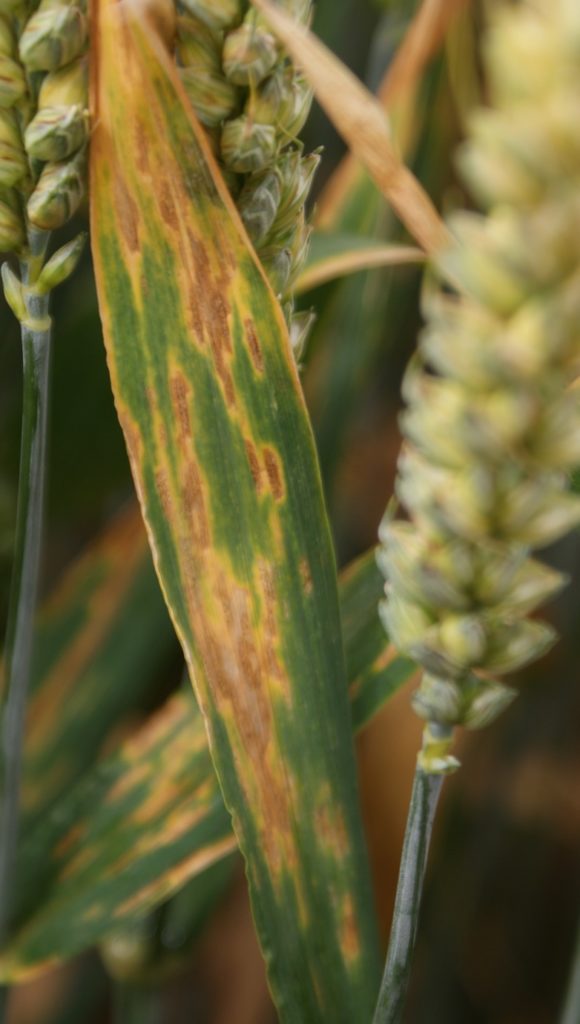Fungicide resistance risk still climbing
2 April 2018The Fungicide Resistance Action Group (UK) met in March to look at the most recent results and to debate guidance. Naturally discussions on septoria took a good part of the day and concerns about SDHI slippage continue to grow. Early season testing of septoria has shown that half of the septoria at Rothamsted, Harpenden carries some form of mutation conferring reduced sensitivity to SDHIs. The position in Scotland appears slightly better as Scottish SRUC trial sites tested in 2018 show that we have fewer septoria mutants with reduced sensitivity to SDHIs, but the fact remains that there were mutations at all the Scottish sites. Most mutations discovered to date only have a small effect on the efficacy of the SDHI but clearly where these start to accumulate it is more worrying and there are now examples of septoria carrying several mutations. The most worrying mutant that has been discovered to date (C-H152R) is effectively completely resistant to SDHIs and is uncontrolled even by high doses. Luckily it appears to be less fit and over several seasons has died away over winter and then reappeared where SDHIs have selected for it and given it enough of an advantage within the season. It therefor remains infrequent in populations but it gives a very powerful example of why resistance management is needed. The worry is that there is an isolate out there carrying a similarly devastating mutation but in a fitter background.
The other rather depressing bit of news at the FRAG meeting was that, after a couple of seasons where the sensitivity of septoria to azoles seemed to have stabilised, the early season data (again from Rothamsed) shows another small drift. The shift isn’t dramatic and is in line with the slow decline we’ve seen over the years with this group so it won’t have significant effect in the field, but it clearly isn’t good news. Multisite fungicides like chlorothalonil are a strong anti-resistance strategy as they add to the efficacy of SDHI and azole partners and are at low risk of resistance development themselves. What is really surprising therefor is when you look at the UK pesticide statistics and find that only 50% of T2 sprays applied to wheat at the main flag leaf emerged timing contain chlorothalonil, and only 13% of T3 ear sprays. It is an easy win to include a multisite which will help to provide good septoria control on an individual crop basis but will also control of any problem isolates that might go on to be problematic for the whole industry.

Potato late blight has developed strains associated with reduced efficacy of fluazinam so guidance on its use has been modified
Changes in potato late blight sensitivity to fluazinam were also discussed as strains of P. infestans associated with reduced effectiveness of fluazinam against late blight have been reported. Two genotypes 33_A2 (Green 33) and 37_A2 are associated with reduced efficacy of fluazinam but in the absence of fluazinam the first of these ( 33_A2) is out-competed so its incidence has declined rapidly following the adoption of modified recommendations for fluazinam use and it is now very rare in mainland Europe and this genotype did not become established in the UK despite a few isolated occurrences. The more aggressive 37_A2 then appeared and has become established in England. Worryingly, 37_A2 has been associated with reduced performance of fluazinam in some field trials and commercial crops in several areas of the UK. With the emergence of this genotype, fluazinam should be used with caution and should not form a major component of spray programmes for this season. Its use should be avoided at the start of the season in case infected seed contains 37_A2 and also avoided at the end of the season to reduce the chance of this genotype persisting as tuber blight. Fluazinam should only be used as a mixture with a low resistance risk multisite such as chlorothalonil or mancozeb or as part of a three-way mix.
Fiona Burnett (SRUC) for the Farm Advisory Service
Sign up to the FAS newsletter
Receive updates on news, events and publications from Scotland’s Farm Advisory Service


